The time and setting of Jona Frank’s childhood would look familiar to millions of Americans: the 1970s, an ordinary suburban house in a middle-class New Jersey neighborhood. But alongside the recognizeable decor, clothing and activities depicted in Frank’s photographic memoir Cherry Hill: A Childhood Reimagined (2020) is a very specific and individual story. It’s a portrait of the artist as a young woman bewildered by her mother’s moods — troubling moods that alternate between an inchoate feeling of despair and misdirected aggression.
In Jona Frank’s EUQINOM Exhibit, There’s No Place Like Home
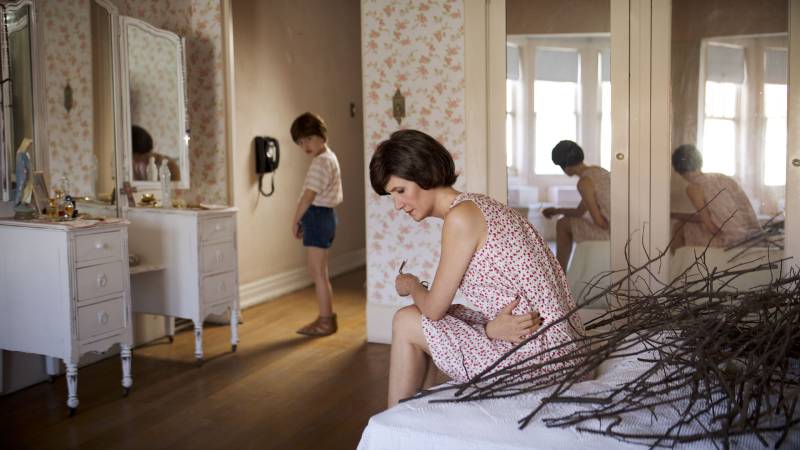
In the book, cinematically staged photographs recreate the artist’s fraught memories of her childhood and teenage years alongside short bursts of text. In You Are Not Enough, Frank’s solo show at San Francisco’s EUQINOM Gallery, the memoir is represented by 13 large-scale prints, needlepoint “drawings” and a custom-made replica of a suburban tract home similar to the one she grew up in.
At the top of the house’s miniature chimney, a viewfinder provides access to a slideshow — a carousel of changing imagery that taps into both nostalgia and nightmares. Frank, who emailed me after we spoke on the phone for this story, pointed out that the house has no door knobs. You can’t return to your childhood, she noted, but you also can’t leave it behind.
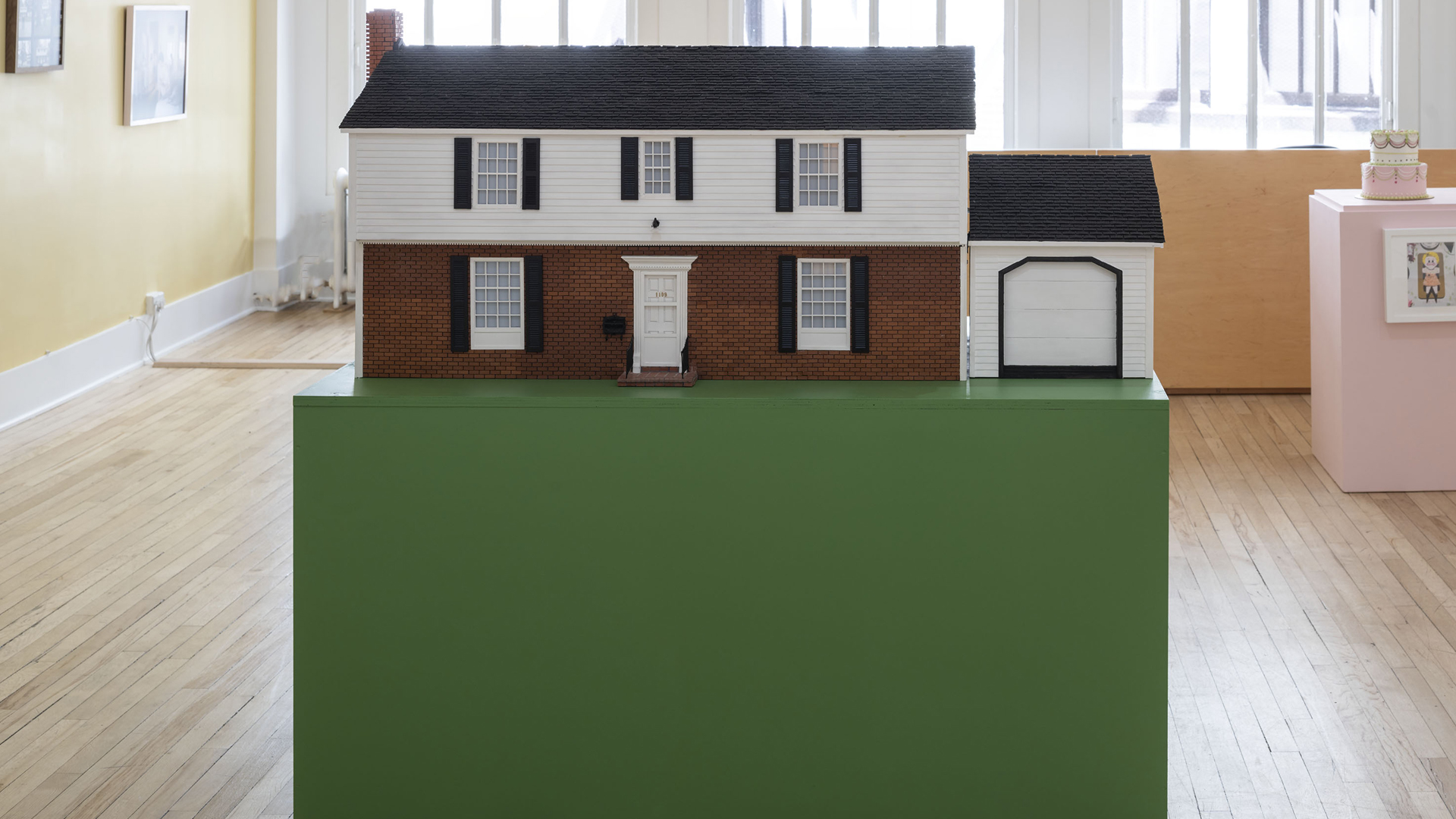
That tract home is the focal point of the exhibit and an object within photographs depicting Frank’s origin story. In Homage to Louise B., a figure places the model on their head — a visual metaphor for the potential mental burden of one’s childhood. For the artist, that weight is clearly stated in the exhibition title, the overriding message Frank’s mother Rose inscribed on her daughter’s psyche. Viewers can catch significant glimpses of their dynamic without reading the compelling coming-of-age story in Cherry Hill, but the memoir enhances the meaning of each photograph hanging on the gallery walls.
Hired actors play the photographer at various stages of her girlhood; at the dramatic center of the series, the actress Laura Dern plays Rose. Disguised in a brown wig, Dern evokes the increasingly frayed internal life of a wife and mother. Though largely chronological, neither the book nor the show hinges on a strict sense of plotting. Frank shot these heightened photographs with an anamorphic CinemaScope lens attached to a high-resolution digital camera. She explained her approach in a 2022 catalog essay, writing that the format “creates a vignette that encourages the feeling of ‘looking in’ while visually accentuating the imperfection of memory.”
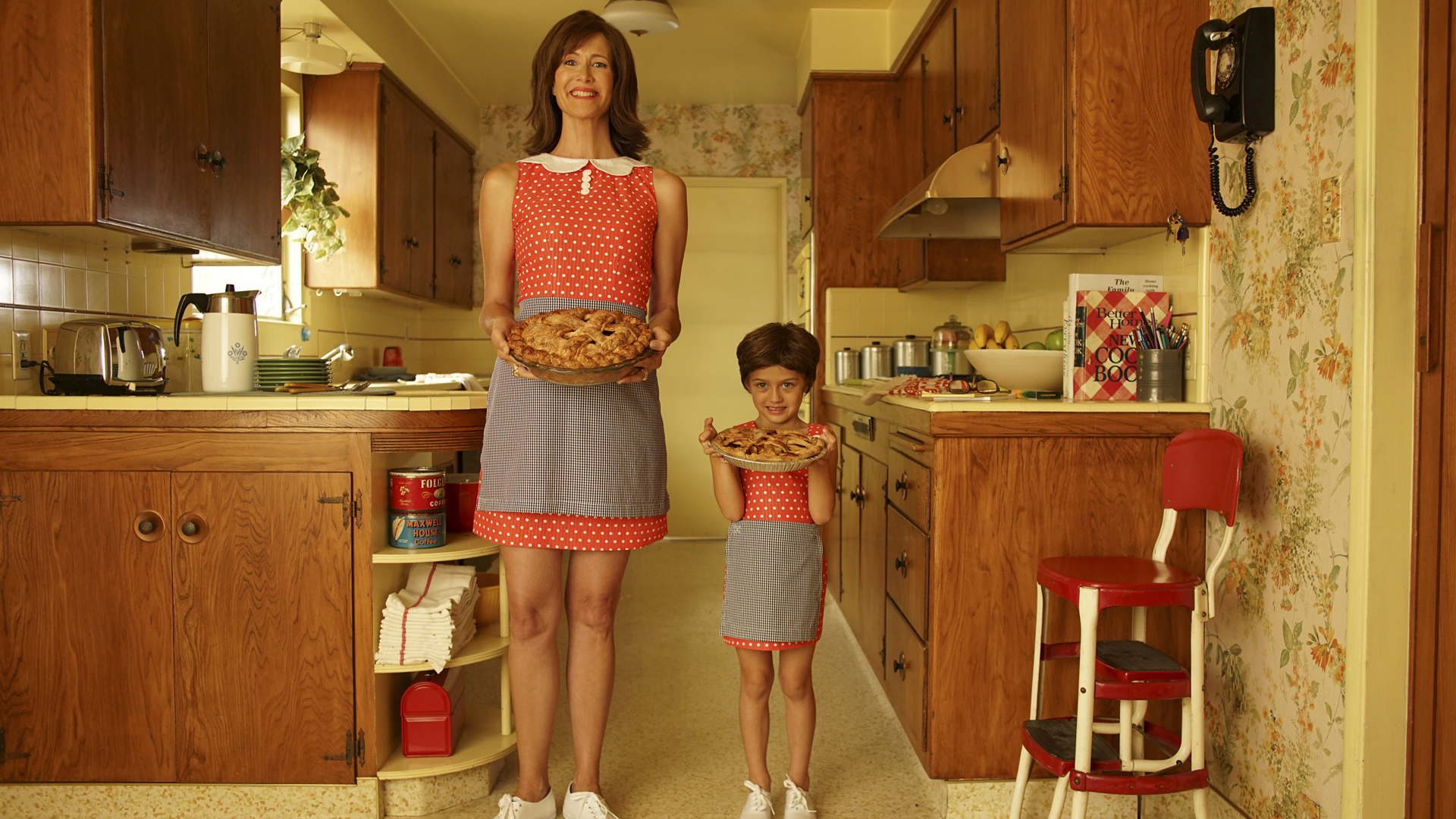
Frank builds suspense by revisiting key moments in her own dawning consciousness. The emotional intensity ramps up, page by page and photograph by photograph, as soon as mother and daughter appear in matching outfits and matching smiles. (Those smiles subsequently dissolve on both faces.)
In The Lie, Dern’s stern expression registers disbelief and disappointment after a confession, a scene that documents a dynamic that played out after Frank found loose change at the bottom of the neighborhood pool. When that discovery elicited a rare moment of approval from her mother, Frank continued to lie to Rose, telling her mother she’d found loose change again and again. The Lie — and the Cherry Hill series, more broadly — capture something primal that takes place between most parents and their children: the painful process of individuation. We watch as a child discovers a unique identity wholly separate from her mother’s.
Years after that confession scene, Almost At Goodbye looks in on Frank and her mother sitting at the kitchen table while Rose pares apples to make a pie. Frank is college-bound, defying her mother’s early decree that women didn’t need a higher education. An unsmiling Dern wields a long knife pointed sharply in the direction of her daughter’s chest.
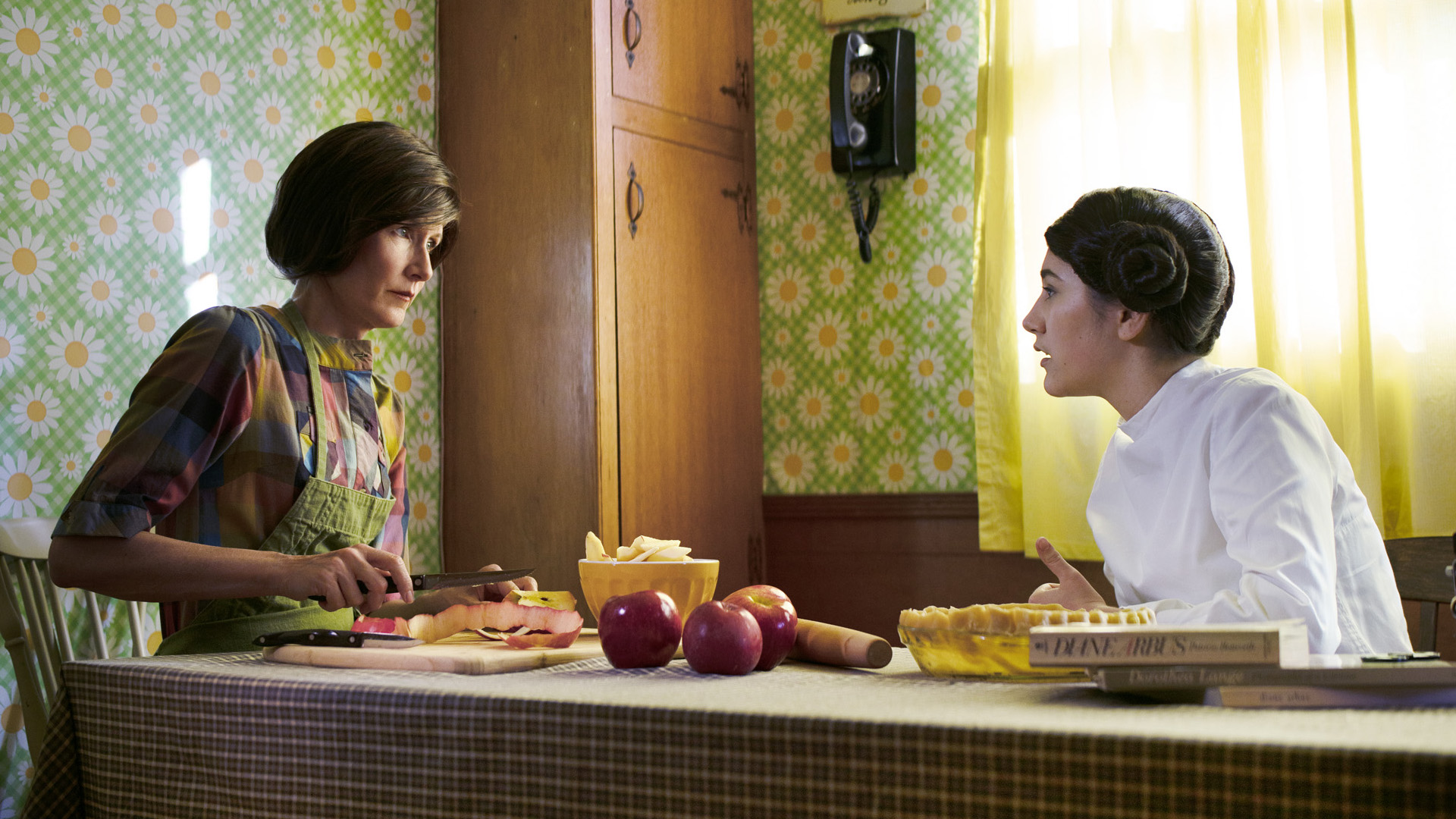
One photo in particular takes aim at the repressive walls of suburbia. Exploding House is a marker — a line of emotional demarcation — in the story Frank tells about her family. The tidiness of the home, with its attendant emphasis on rigid schedules and clean surfaces, can’t contain or hide the emotional disorder rumbling underneath. Rose was given to implosions, temporarily damning her children with silent treatments.
“Everything was on a certain trajectory,” Frank recalled in our phone conversation. “It was so repetitive and things were so expected.” When her brother Mark had a breakdown, she said, “It literally blew everything up.” Her mother’s “gray days and dark moods” increased afterwards.
“This whole idea of everything being picture perfect was suddenly gone,” Frank explained.
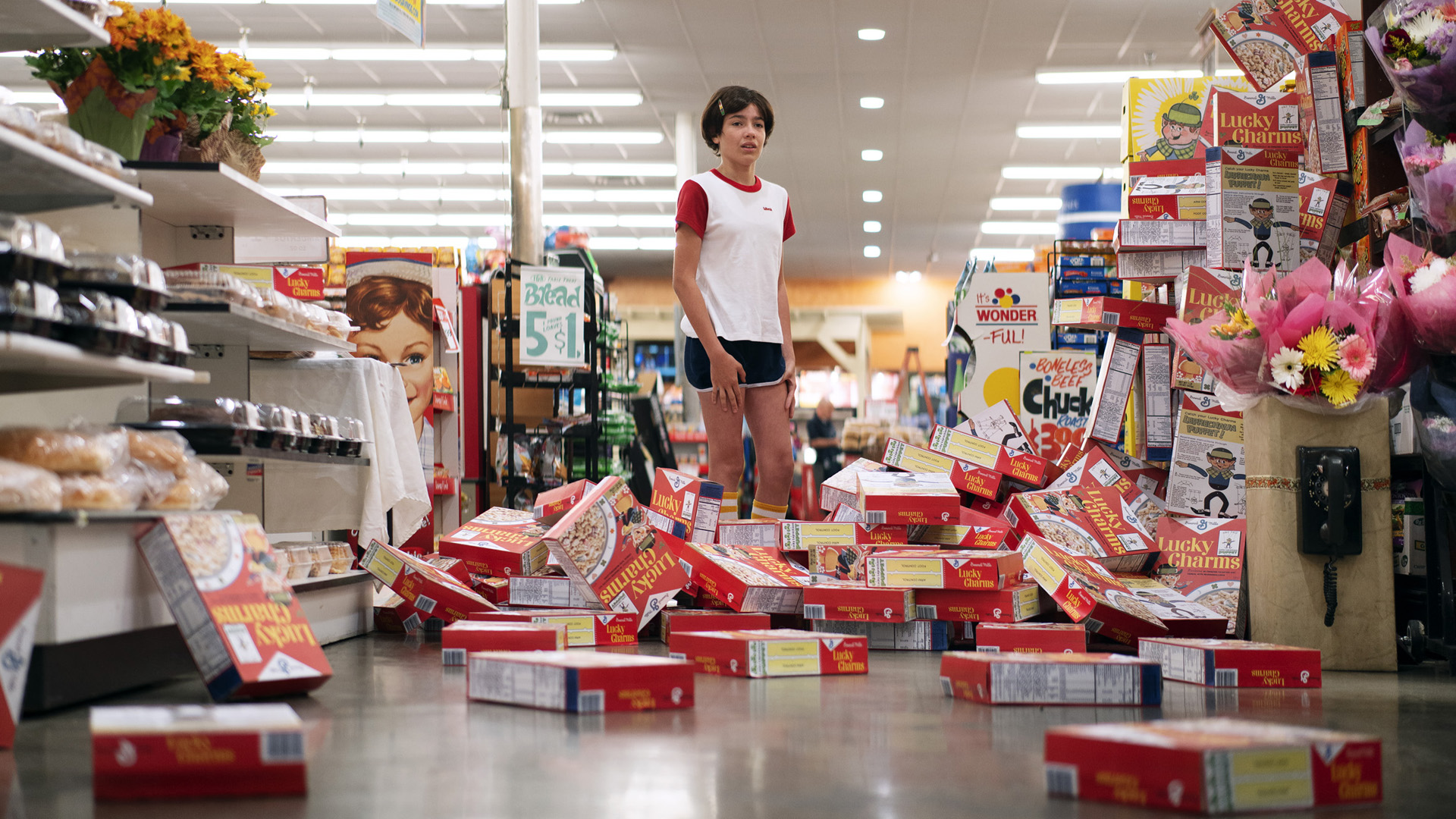
Frank considers Cherry Hill to be a Künstlerroman, a novel about an artist’s formative years. “Usually in a Künstlerroman, there is an event that forces the protagonist to question what’s been familiar,” she explained. “And then you realize something’s shifted here and I have to escape this.” For Frank, that shift happened when her brother started to experience psychotic episodes.
Rose believed that if she brought Mark back to the house after one of his breakdowns it would “reset him.” When Frank was making the book, she felt there had to be an image to capture the idea of everything falling apart. A photo she’d taken long ago, when she was in her 20s, became that image: a house boarded up after a gas explosion and fire.
“In this strange way, it felt like I was building up to this project my whole life,” Frank says of the series. As Homage to Louise B. indicates, that childhood home was responsible for so much psychic weight, creating the project was ultimately cathartic. “It really did confirm that sharing a story is relevant,” she said. “It made me see that really listening to yourself and trying to be as truthful as an artist can be in their work is a good choice.”
Frank, like most of us, did escape from her parents’ house. In her follow-up email, she also arrived at an unsettling conclusion: “A piece of us remains in those childhood homes and never leaves.”

Jona Frank’s ‘You Are Not Enough’ is on view at EUQINOM Gallery (49 Geary St., Suite 417) through July 8.

